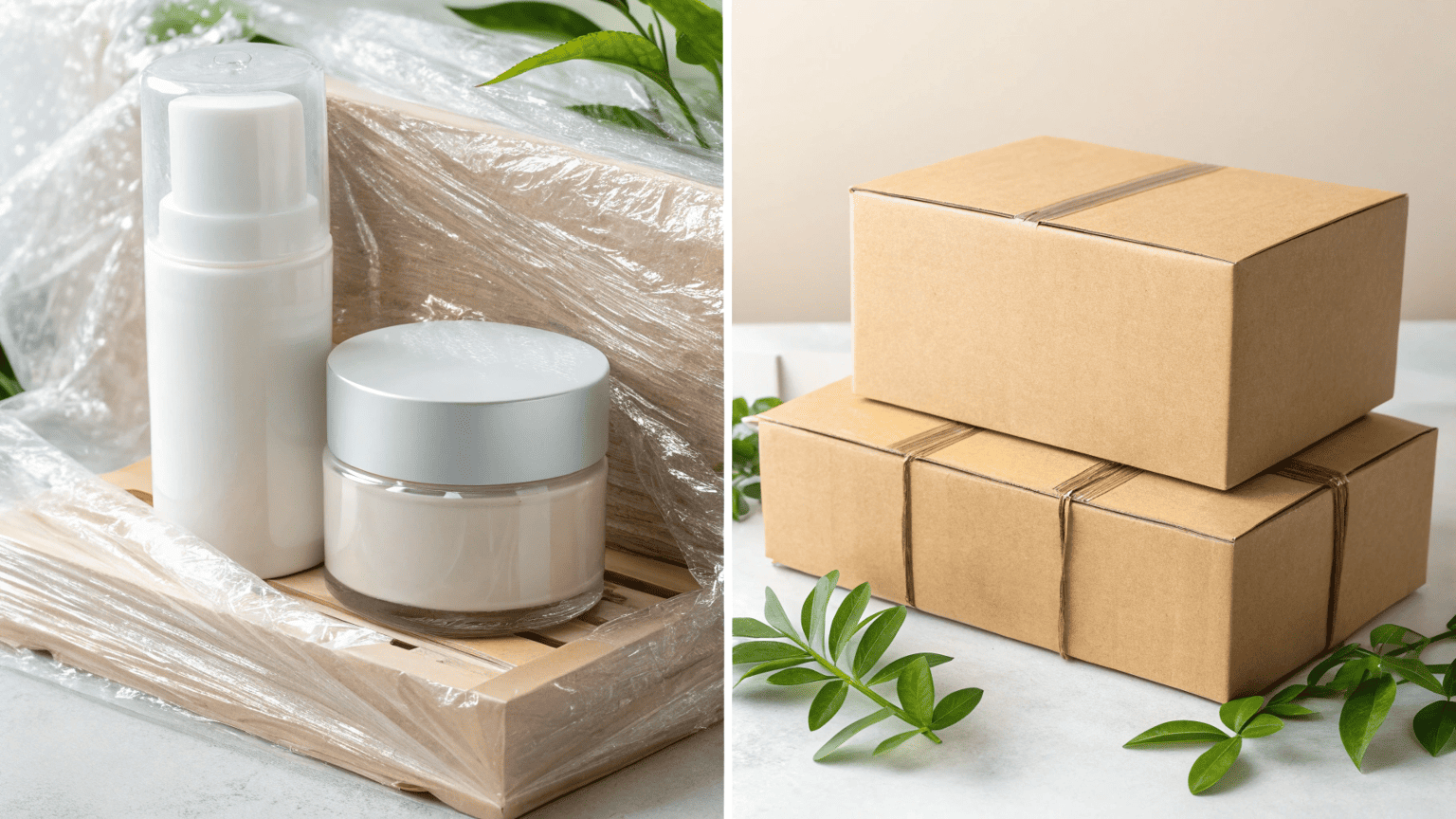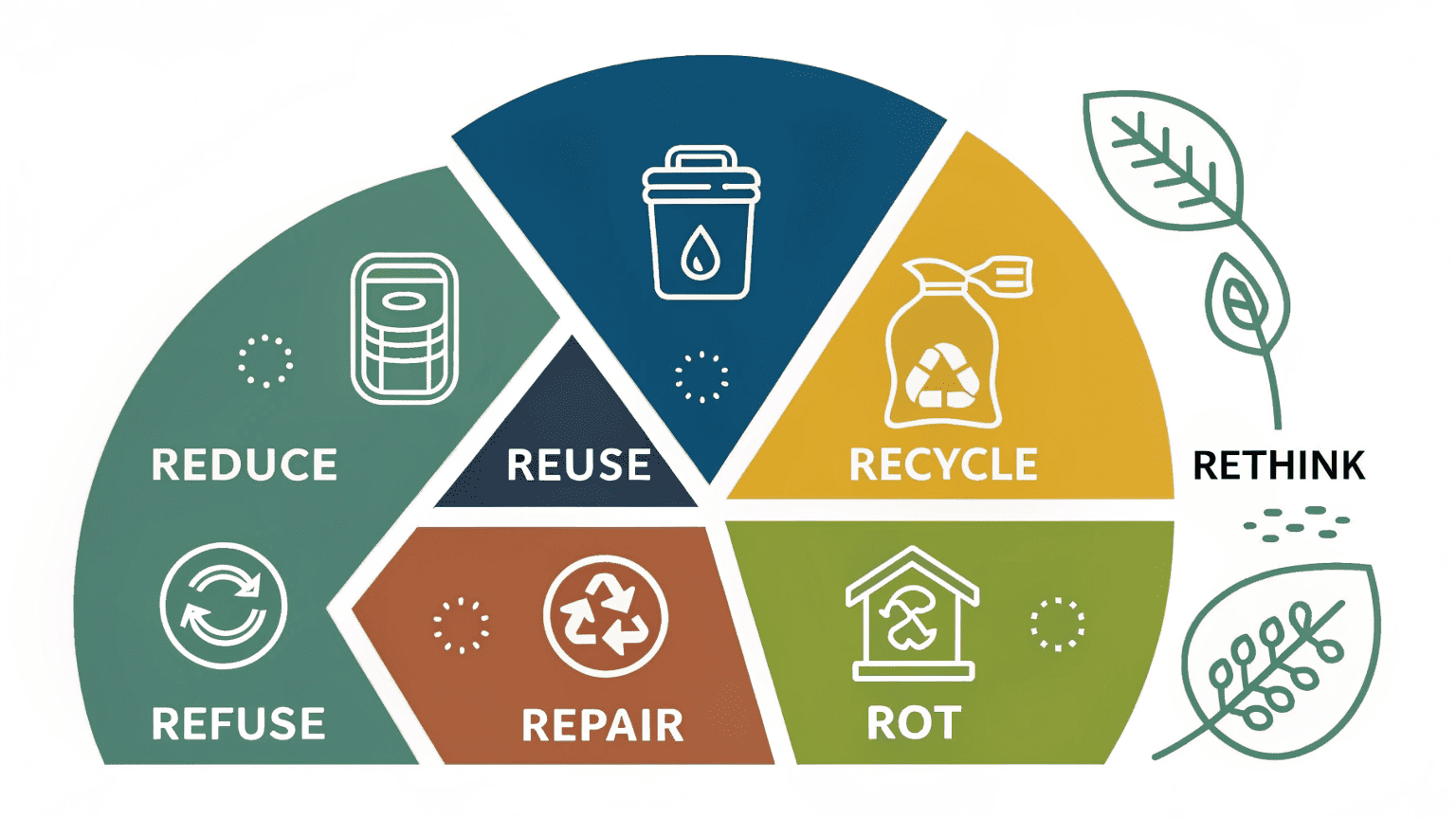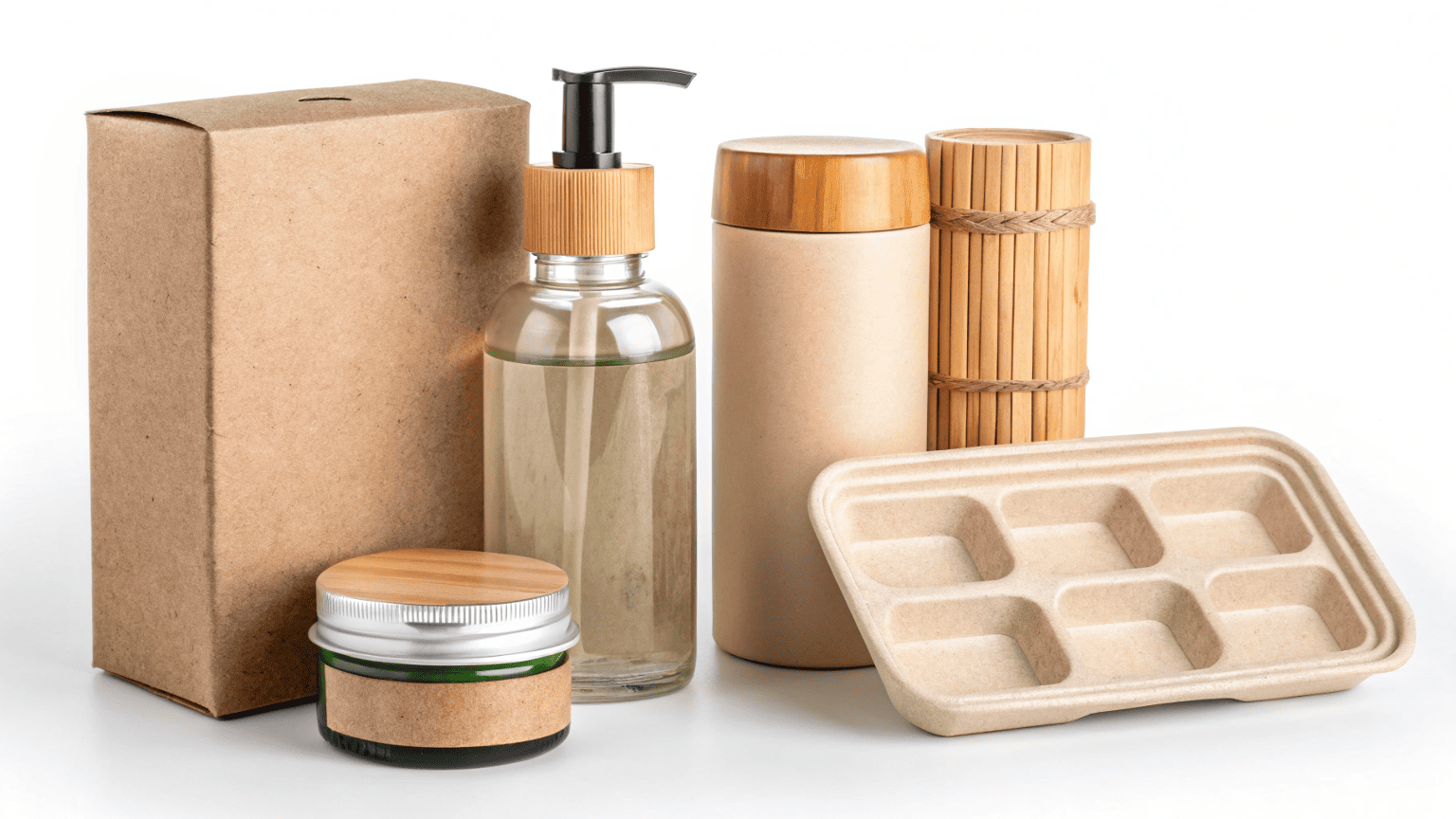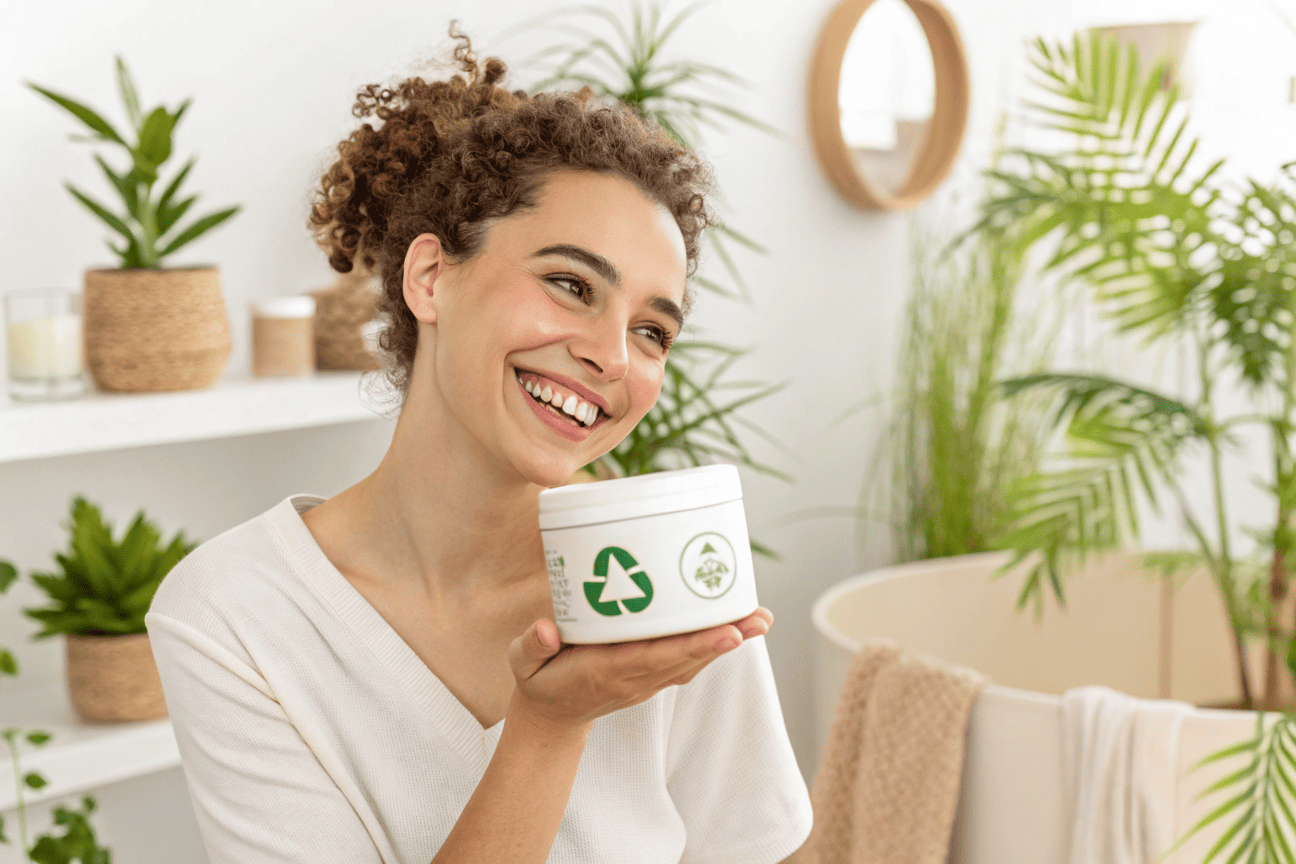
How to Communicate Sustainability Through Packaging Design?
September 16, 2025 • Mike Lee
Your brand is genuinely eco-friendly, but your packaging doesn't show it. Customers can't see your commitment, so they choose another brand that looks greener, even if it's not.
Communicate sustainability by choosing visibly eco-friendly materials like kraft paper or rPET, adopting minimalist designs that suggest less waste, and using clear on-pack icons and text to explicitly state your commitment, turning your package into an honest storyteller.

A client once told me, "We have a fantastic, all-natural formula, but our sales are flat. On the shelf, we look just like every other brand." They were right. Their packaging was glossy and complex, which completely contradicted their sustainable mission. We worked together to redesign their packaging, and that process taught me a crucial lesson. The package is your brand's "silent salesman." Before a customer ever reads the ingredients, the design of your packaging has already told them a story about your values.
How to Communicate Sustainability Effectively?
You've chosen sustainable materials, but customers don't seem to notice or care. Your efforts feel invisible, and you're struggling to translate your investment into a clear message that resonates.
Effective communication requires a three-part strategy: the material must feel eco-friendly, the design must look minimalist and intentional, and the on-pack text must be simple, honest, and direct about your choices.

Communicating sustainability is about more than just slapping a recycling symbol on the box. It's about creating a cohesive experience where every design element reinforces your eco-friendly message. I always advise my clients at Rland to think about three key pillars.
1. The Material Tells a Story
The physical feel of your packaging is your first and most powerful message.
- Choose Visibly Sustainable Materials: Using materials like Post-Consumer Recycled (PCR) plastic with a slight fleck, kraft paper, or molded pulp immediately signals an environmental choice. These materials have a natural, less-processed look and feel that customers instinctively associate with sustainability.
- Mono-Material Design: When you use a single material for the bottle and cap, it's not just easier to recycle; it looks simpler and more considered. This communicates thoughtfulness.
2. The Aesthetics Signal Your Intent
Minimalism is the visual language of sustainability.
- "Less is More": A clean, uncluttered design suggests you are not wasteful. Avoid unnecessary layers, boxes, or inserts. Use simple typography and a limited color palette.
- Eco-friendly Inks: Consider using soy-based or water-based inks and mention this on the packaging. It's a small detail that shows a deep commitment.
3. The Words Provide the Proof
Don't make customers guess. Tell them exactly what you've done.
- Be Specific: Instead of a vague "Please Recycle," use direct language like, "This bottle is made from 100% rPET. Rinse and recycle it with the cap on."
- Use Icons: Well-recognized symbols for recyclability, FSC certification, or vegan status can communicate complex ideas quickly.
What Are the 7 R's of Sustainable Packaging?
You hear terms like "reduce" and "recycle," but you know there's more to it. You want a complete framework to make sure your sustainability strategy is comprehensive and not missing any key elements.
The 7 R's are a framework for holistic sustainability: Reduce, Reuse, Recycle, Rethink, Refuse, Repair, and Rot. They provide a guide for brands to minimize their environmental impact at every stage of the packaging lifecycle.

Thinking through the 7 R's helps you move beyond just recycling and develop a truly circular approach to your packaging. It's a fantastic tool I use to help brands brainstorm during the design phase. It forces us to ask tougher, more meaningful questions about our choices.
Here's how each "R" applies directly to cosmetic packaging:
| "R" | Meaning for Packaging Design | Example |
|---|---|---|
| Reduce | Use less material overall. | Eliminate outer boxes; design smaller, lighter-weight packaging. |
| Reuse | Design packaging to be used again. | Create a beautiful jar the customer can use for storage after it's empty. |
| Recycle | Choose materials that can be reprocessed. | Use mono-material PET or glass that is easily recycled curbside. |
| Rethink | Challenge the need for traditional packaging. | Switch from a liquid in a bottle to a solid shampoo bar with a paper wrap. |
| Refuse | Reject unnecessary materials. | Say no to plastic shrink-wrap, PVC, or complex mixed materials. |
| Repair | Create durable, long-lasting systems. | Offer a refillable system where the primary container is a permanent, high-quality object. |
| Rot | Use compostable or biodegradable materials. | Develop packaging from materials like PLA or molded pulp for single-use items. |
By considering all seven, you can build a multi-layered sustainability story. You can reduce your primary packaging, make it from recyclable materials, and design it to be part of a reusable refill system.
What Is the Role of Packaging in Sustainability?
You wonder if focusing on packaging is enough. Is it just a small part of the problem, or can it really make a significant difference for your brand's overall environmental impact?
Packaging plays a critical role. It is often the most wasteful part of a product's lifecycle and the most visible symbol of a brand's commitment to the environment. Sustainable packaging directly reduces waste and powerfully communicates your brand's values.

The role of packaging in sustainability is two-fold: it has a technical function and a communication function. Both are equally important.
The Technical Role: A Direct Environmental Impact
This is about the physical reality of your choices. The packaging you choose has a direct, measurable effect on the planet. By choosing a lightweight, recycled material, you are tangibly reducing carbon emissions from manufacturing and transport. By designing for recyclability, you are enabling a circular economy and preventing your packaging from ending up in a landfill. A client of mine who switched from a heavy glass jar to a lightweight 100% rPET jar for their body cream reduced their shipping carbon footprint by over 40%. These are real, quantifiable wins for the environment.
The Communication Role: A Message to Your Customer
This is about perception and influence. For many customers, your packaging is the only physical interaction they will ever have with your brand. It becomes the tangible proof of your mission. A brand that talks about natural ingredients but uses excessive, non-recyclable plastic creates a sense of distrust. Conversely, when the packaging philosophy aligns with the product philosophy, it builds a powerful, authentic brand identity. Your sustainable packaging choice tells your customer, "We care about the same things you do." It turns a simple purchase into a statement of shared values, which is the foundation of true brand loyalty.
Conclusion
Your packaging is your promise. By thoughtfully choosing sustainable materials and using clear design and messaging, you can effectively communicate your brand's commitment to the planet and build a stronger connection with your customers.
Written by
Mike Lee
You may also be interested in:

How Do You Source 10–50ml Spray Bottles Wholesale? A Guide to MOQ, Price, and Lead Time
You need to order 10-50ml spray bottles for your new product line, but every supplier

Leak-Proof Design: How Can You Choose Reliable Spray Bottles for Travel Products?
You've spent months perfecting your new travel-sized product. You imagine customers loving it on their

What Truly Makes a High-Quality Spray Bottle? A Complete Buyer’s Guide
You need to source spray bottles for your product line, but you're overwhelmed. Two bottles

Why Is Sunscreen Packaging So Much More Challenging Than Regular Skincare Packaging?
You think a bottle is just a bottle, right? You assume the elegant packaging that